Table of Contents
ToggleAdvantages of Replacing Stadium Lights
LED Efficiently Replaces Metal Halide Football Stadium Lights
In the past, metal halide lamps were considered the gold standard for stadium lighting. However, today’s LED lights offer superior performance and numerous advantages:
| Feature | Metal Halide Lamps | LED Lights |
|---|---|---|
| Illumination Time | Can take up to 15 minutes to reach full brightness | Illuminate instantly |
| Energy Efficiency | Uses more power | Uses less power, leading to significant savings |
| Cool Down Time | Requires a cool-down period | No cool-down period needed |
| Maintenance Costs | Higher running costs and maintenance needs | Lower maintenance costs and reduced running costs |
Moreover, traditional metal halide lamps can contain radioactive substances such as thorium, which are used to improve the starting time but can be hazardous. LEDs offer a safer and more reliable alternative, with immediate lighting and no such concerns.
LED Safely Replaces Mercury Vapor Bulbs
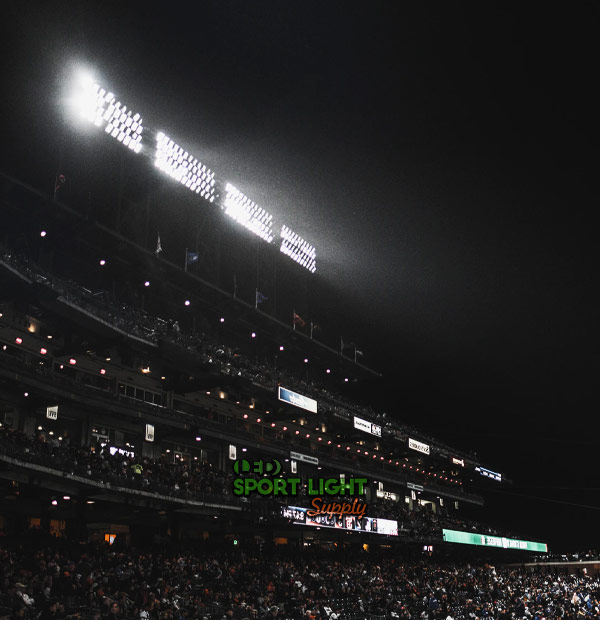
Mercury vapor bulbs pose serious safety risks. If a bulb breaks, the mercury vapors can cause acute intoxication, nervous system damage, and even death. Chronic exposure, known as mercurialism, can insidiously affect the nervous system, with symptoms becoming apparent only months later.
LED lights address these safety concerns:
No Toxic Mercury
One of the most significant advantages of LEDs is their lack of toxic mercury. Unlike fluorescent lights, which contain mercury and pose a risk of mercury vapor exposure if broken, LED lights are completely mercury-free. This eliminates the environmental and health hazards related to mercury contamination, making LED lighting a safer choice for both indoor and outdoor applications.
No Flickering
LED lights do not suffer from flickering, a common issue with older lighting systems. Flickering lights can cause discomfort, eye strain, and even headaches, particularly in environments where people are exposed to them for extended periods. The consistent, flicker-free illumination provided by LEDs not only enhances visual comfort but also reduces the frequency of light replacements, as the durability of LEDs ensures long-lasting performance without the need for constant maintenance.
No Ultraviolet Radiation
Traditional light sources, such as incandescent and fluorescent bulbs, emit varying levels of UV radiation, which can pose risks to both human health and sensitive materials. Prolonged exposure to UV rays can lead to skin damage, eye strain, and the fading of fabrics and artwork. LED lights, however, do not emit UV radiation, providing a safer lighting option that minimizes these potential hazards while still delivering high-quality illumination.
LED Replaces High Pressure Sodium Stadium Lamps
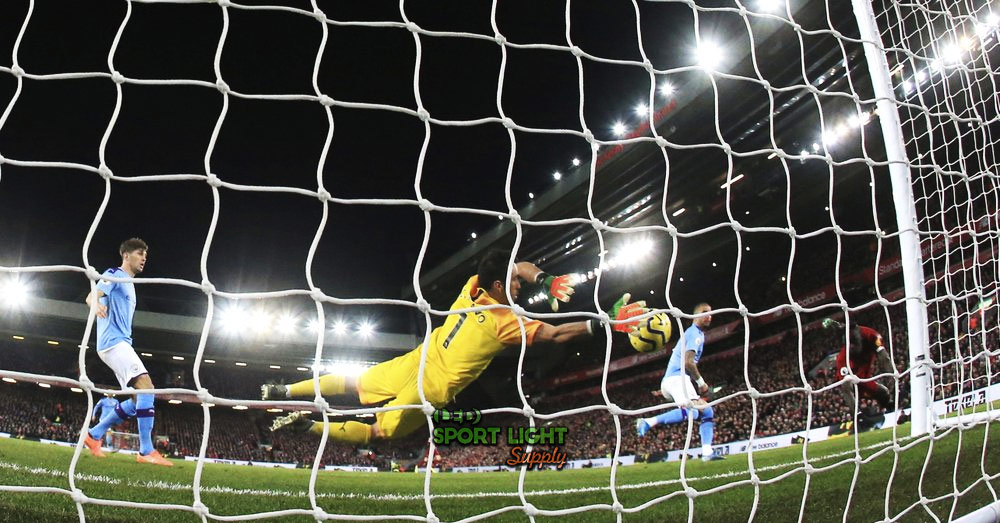
High-pressure sodium (HPS) lamps are known for their low Color Rendering Index (CRI) of less than 60, which can distort the true colors of players and the field. In contrast, LEDs offer a high CRI of 85 or more, making them ideal for high-profile events like FIFA World Cup or Premier League matches.
HPS lamps generate significant heat, necessitating a robust ventilation system. LEDs, on the other hand, generate less heat and thus require less cooling.
Additionally, HPS lamps have a shorter lifespan compared to LEDs, making LED lights a more durable and cost-effective choice. LEDs also eliminate the need for ballasts or starters, simplifying installation and maintenance.
| Feature | Metal Halide | Mercury Vapor | High Pressure Sodium | LED |
|---|---|---|---|---|
| Warm-Up Time | Up to 15 minutes | N/A | N/A | Instant |
| Energy Efficiency | Lower | Lower | Lower | Higher |
| Cool Down Time | Required | N/A | Required | Not Required |
| Maintenance | Higher | Higher | Higher | Lower |
| Toxicity | Possible (Thorium) | High (Mercury) | Low | None |
| CRI | Variable | Variable | <60 | 85+ |
| Heat Emission | High | Variable | High | Low |
How to Replace Metal Halide Stadium Lights with LED
Lumens of Metal Halide Lamps
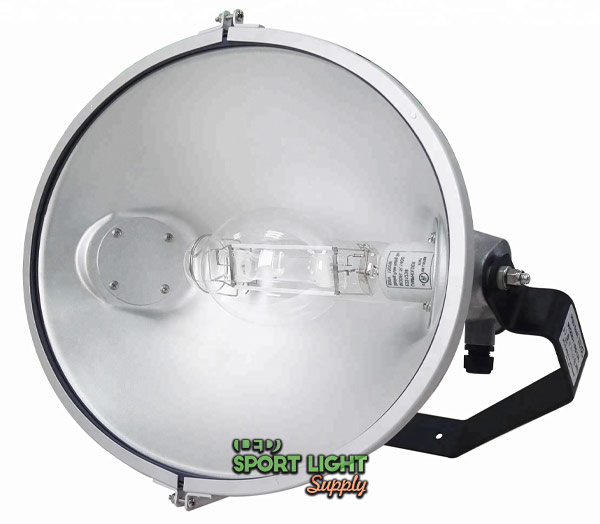
To effectively replace metal halide (MH) stadium lights with LED, you first need to understand the lumen output of your existing MH lamps. Lumen measures the light intensity emitted by a lamp, which is crucial for selecting an appropriate LED replacement.
Typically, the model name or code of the metal halide fixture is printed on the base of the lamp. This information allows you to access the technical specifications or product data sheet, which includes the lumen output. Once you have this lumen value, you can find an LED replacement by selecting products with equivalent or higher lumen output to ensure adequate lighting.
Common Wattages of Metal Halide Replacements
If you are unable to locate the exact lumen value of your metal halide lamps, you can use the following wattage guidelines to help find a suitable LED replacement:
| Metal Halide Wattage | Approximate Lumens | LED Wattage Equivalent |
|---|---|---|
| 400W | 40,000-50,000 | 100-200W |
| 1,000W | 130,000-140,000 | 300-600W |
| 1,500W | 190,000-200,000 | 600-800W |
| 2,000W | 270,000-280,000 | 800-1,200W |
Wattage alone is not sufficient for finding a replacement because it only indicates power consumption, not light output. For example, a 2000W LED designed for a grow room may not match the lumen output of a 2000W stadium LED. Therefore, finding the lumen output of the existing metal halide lamp is critical for an accurate LED replacement.
Wattage Equivalent of MH Lamps
Switching to LED lighting generally results in significant energy savings. For instance, a 1000W metal halide floodlight can be replaced with a 300-600W LED. This is because HID bulbs lose lumen output over time, and LEDs are more efficient.
Metal halide lamps typically emit between 50 to 80 lumens per watt. In contrast, LEDs can achieve up to 140 lumens per watt. This efficiency means that you can achieve the same or better lighting with less power consumption by using LED lights.
Beam Angle
LED lights offer flexibility in beam angles, which allows for more precise control of light distribution. You can choose from wide beam angles (120 degrees or more) or narrow angles (less than 60 degrees), depending on your needs. Many LED lights also offer adjustable beam angles or come with accessories like lenses or reflectors to further control light output.
In contrast, metal halide floodlights often used shutters and shields to control light distribution, which could pose safety risks due to their heat output or installation height. LEDs eliminate these issues with advanced control features, including remote control options. Many modern LED systems can be controlled via smartphone, allowing for easy adjustments and precise light management.
Bulb Base
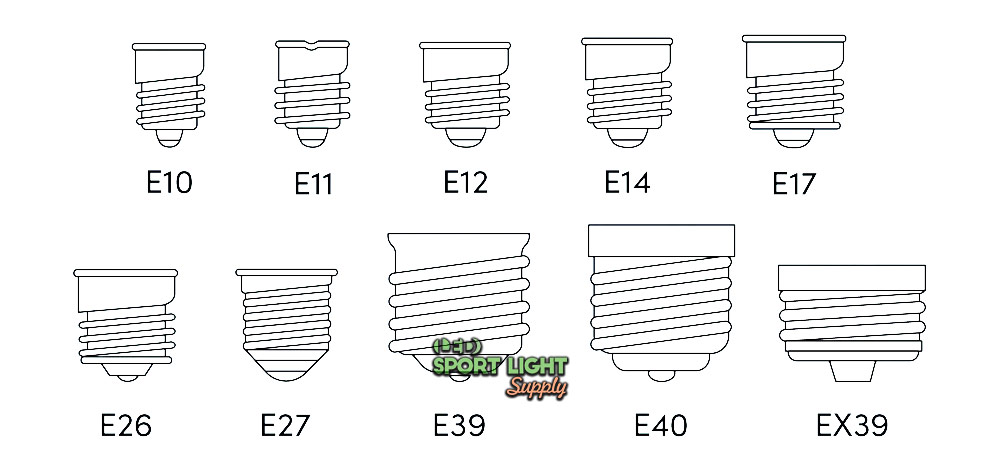
When selecting an LED replacement, ensure it has the correct screw base. Most HID lights use a mogul or goliath base, which corresponds to E39 or E40 screw bases. Your LED retrofit should match this base to fit properly.
If you have an LED with a different base type, you’ll need an adapter. For example, if your existing fixture uses an E39 or E40 base, you’ll require an adapter to convert to the new base type. Ensure the adapter fits within the casing, as it may occupy additional space.
Input Voltage
Be mindful of the input voltage when retrofitting LED lights. Metal halide lamps require a ballast for operation, while LEDs do not. In fact, a ballast can damage an LED light by providing excessive voltage. LEDs can operate on lower voltages, such as 12V, but each product has a specific voltage range for optimal performance. Choose an appropriate driver to regulate the voltage for the LED retrofit.
Ballast Issue
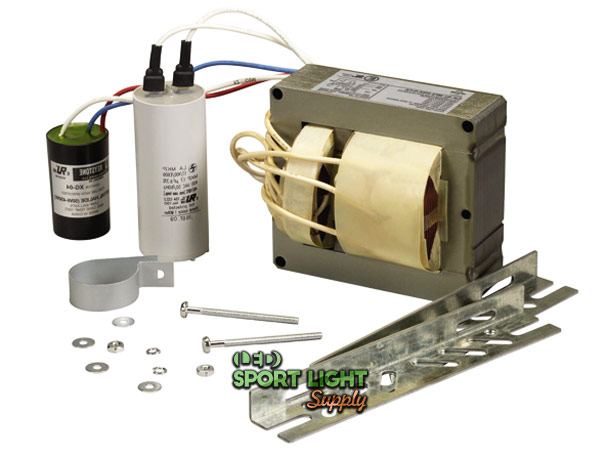
In some cases, you might find that the metal halide lamp has no external ballast because it is self-ballasted. These self-ballasted MH lamps typically operate on 110/220Vac or 230/240V.
If your existing HID lamp operated on Vac voltage, ensure your LED driver is compatible with the same voltage range. Most LED lights function with any voltage up to 270Vac, but consult the reseller if you have any doubts. For standard metal halide bulbs, remove the ballast to convert the lamp holder and casing for the new LED lighting system.
By considering these factors, you can successfully transition from metal halide to LED stadium lights, ensuring efficient, reliable, and high-quality lighting.
How to Replace Mercury Vapor Football Field Lights with LED
Lighting System
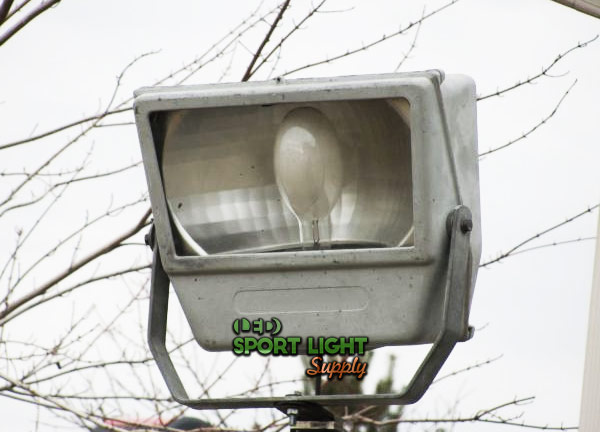
Mercury vapor football field lights often use specific casings and housings designed to protect the gas-discharge lamps. These fixtures were primarily used for street lighting and may offer limited space for installing an LED retrofit with a driver. In some cases, it may be more practical to replace the lamp holder altogether to accommodate the new LED system.
If you choose to keep the existing mercury vapor lamp socket, first locate the ballast, which is typically positioned near the bulb. In older models, the ballast may be in a different location, while the most recent models are often self-ballasted. If the ballast is not easily accessible or if the housing is not compatible with LED retrofits, consider replacing the lamp holder to ensure a proper fit for your new LED lights.
Lumens of Mercury Vapor Lights
Mercury vapor lights are known for their low light efficiency, typically less than 60 lumens per watt. This makes them relatively straightforward to replace with LEDs.
For example, a standard 1000-watt mercury vapor lamp produces up to 58,000 lumens but generally only lasts about 25,000 hours. The lumen output of mercury vapor lamps diminishes significantly after the initial 5,000 hours of use. In contrast, even a lower-end 500W LED spotlight can deliver around 66,000 lumens. Therefore, any professional-grade stadium LED light should easily surpass the performance of the old mercury vapor lights. For stadiums hosting major events or championships, consult the relevant guidelines for optimal lighting standards.
Common Wattage of Mercury Vapor Replacements
When replacing mercury vapor lamps with LEDs, aim for an LED light that consumes at least half the wattage of the mercury vapor lamp it is replacing. If the lumen output of the old mercury vapor lamp is not specified, check the wattage marked on the screw base of the lamp.
Mercury vapor lamps typically provide a lumen output between 40 and 60 lumens per watt. To estimate the luminous efficiency, multiply the lamp’s wattage by this lumen range. For example, a 1000W mercury vapor lamp could be replaced with a 1000W LED retrofit. However, because LED lights are more efficient, a 500W LED can often replace a 1000W mercury vapor lamp effectively.
By considering these factors, you can successfully transition from mercury vapor to LED lighting, ensuring improved performance, efficiency, and longevity for your football field.
Color Temperature
Mercury vapor stadium lights emit a bluish light, which is defined by the color temperature, usually indicated in the specs as a measurement in Kelvin (K). If you wish to maintain the same light color as the mercury vapor lamps, choose an LED with a cold white color temperature, typically higher than 5,500K.
However, be aware that most sports lighting regulations, such as those from FIFA, recommend avoiding color temperatures higher than 7,000K to ensure appropriate lighting conditions for athletes and spectators.
Safety Recommendations
When installing LED replacements for mercury vapor lamps, follow standard LED retrofit installation procedures. However, keep in mind that mercury vapor lamps pose additional safety risks.
Ensure that the bulb does not crack during handling or installation. Mercury vapor lamps contain hazardous materials, and any broken bulbs require special disposal procedures. Contact your local waste management facility for guidance on proper disposal, especially in case of a mercury spill.
Additionally, wear gloves while handling the bulbs to avoid leaving fingerprints. The oils from your skin can cause the glass to crack during the bulb’s ignition. By following these safety measures, you can ensure a smooth and safe transition from mercury vapor to LED lighting.
How to Replace High Pressure Sodium (HPS) Stadium Lights with LED
Lumens of High Pressure Sodium Bulbs
High Pressure Sodium (HPS) lights have been a popular choice for stadiums and other large outdoor areas due to their effective illuminance. Traditional HPS bulbs, particularly the 1,000-watt models, produce between 110,000 and 130,000 lumens. HPS lights are known for their reddish-orange light spectrum, which typically ranges around 2,000 Kelvin. They operate at very high temperatures and are commonly used in outdoor settings such as stadiums and parking lots.
Recent advancements in LED technology have led to the discontinuation of many higher wattage HPS bulbs, as newer LED models offer superior performance and efficiency. LEDs now provide a more energy-efficient and effective lighting solution compared to HPS bulbs.
Common Wattage of HPS Replacements
LED technology has rapidly evolved, offering more efficient and reliable lighting solutions compared to HPS. For replacing conventional 1,000W HPS fixtures, a 600W LED light is a popular and effective choice. LEDs are not only more energy-efficient but also emit less heat, allowing for more flexible and safer positioning of lights.
In modern stadium lighting setups, especially in domed or hybrid-covered arenas, a single row of 2,000W LED lights positioned around the ceiling can be an effective solution. This setup is suitable for providing comprehensive and uniform lighting, adapting well to various stadium designs.
Product Specifications
High Pressure Sodium lamps have notable limitations, such as a low Color Rendering Index (CRI), typically below 40. CRI measures how accurately a light source displays colors in comparison to natural light. For televised events and high-quality lighting requirements, a CRI rating of 90 or above is recommended. When replacing HPS lights, ensure that the LED fixtures offer high CRI values to achieve accurate color rendering and optimal visual quality.
Additionally, HPS bulbs contain mercury and have a limited lifespan, which necessitates proper disposal procedures to avoid potential health hazards and environmental impact. Proper handling and disposal of old HPS bulbs are crucial to prevent incidents related to overheating or exposure to hazardous materials.
Bypass the Ballast for Retrofit Installations
When converting an HPS fixture to LED, the process involves removing the existing HPS bulb and bypassing the ballast. Begin by turning off the electricity to ensure safety during the installation.
Most LED retrofits allow for bypassing both the ferromagnetic ballast and igniter. To do this, cut the hot and neutral wires connected to the ballast and follow the manufacturer’s instructions for connecting the LED retrofit. Typically, this involves connecting the input hot and neutral wires directly to the output terminals of the LED fixture. Ensure that the installation follows safety protocols to avoid electrical hazards and ensure proper functionality of the new LED lights.
Common Mistakes When Retrofitting Stadium Lights with LED
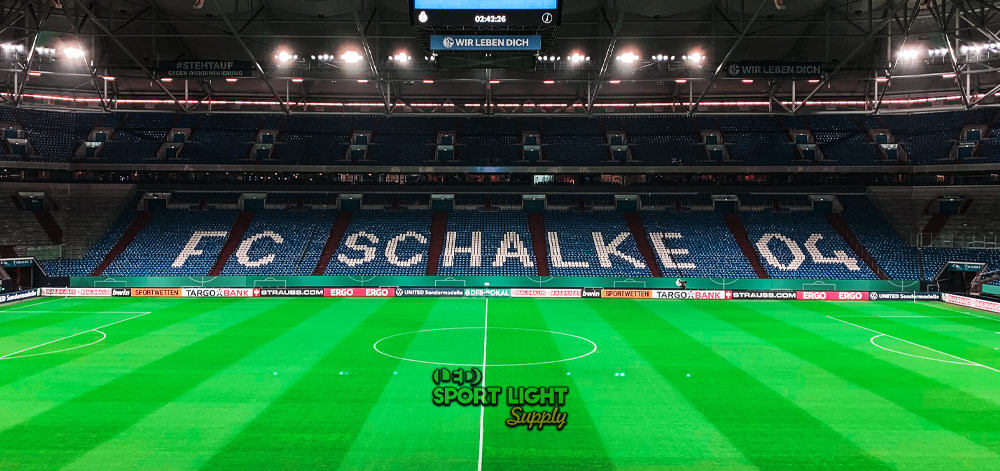
Using the Wrong Power
One of the most common mistakes in retrofitting stadium lights is focusing solely on wattage rather than lumen output. Simply replacing a high-wattage HID light with an LED of equivalent wattage does not guarantee similar performance. Instead, you should compare the lumen output of the old HID lights to that of the new LED fixtures.
For instance, a typical football stadium might use 2,000-watt LED lights to ensure adequate illuminance for the matches. To determine the appropriate LED replacement, you need to know the required lux level for your stadium and ensure the new LEDs meet or exceed the lumen output of the old fixtures. Failing to consider lumen output can result in insufficient lighting, affecting both performance and safety.
Omitting the Beam Angle
Another critical mistake is not matching the beam angle of the new LED fixtures with the old HID lights. The beam angle determines how light is distributed across the playing area, and discrepancies here can lead to uneven lighting or dark spots.
Using lighting design software like DIALux can help you calculate the required beam angle and lumen output for your new LEDs. By doing so, you ensure that your new lighting system provides the same level of coverage as the previous setup, potentially reducing energy consumption and improving lighting efficiency.
Incorrect Input Voltage
Incorrect input voltage is a common issue when retrofitting stadium lights. LEDs are sensitive to voltage levels, and using the wrong voltage can lead to overheating and potential damage. LED fixtures often come with dedicated drivers designed to handle specific voltage ranges.
Before installation, ensure that the input voltage of your new LED fixtures matches the power supply available in your stadium. Overvoltage can cause excessive heat, which may damage surrounding materials or components. Properly matching the voltage is essential for the safe and effective operation of your new lighting system.
Weight of Stadium Lights
The weight of new LED fixtures can be significantly different from that of the old HID lights, and this can pose structural challenges. Light poles and mounting structures may not be designed to support the added weight of newer, more robust LED fixtures.
To address this, assess the weight of the new LED fixtures, including any additional components such as drivers. Conduct a test by retrofitting one fixture and monitoring the pole for any signs of stress, such as tilting or instability. Ensuring that your mounting structure can handle the weight of the new lights is crucial for maintaining safety and preventing damage.
By avoiding these common mistakes—focusing on lumen output, matching beam angles, ensuring correct input voltage, and considering weight—you can achieve a successful and efficient retrofit of your stadium lighting system with LED technology.
Conclusion
Retrofitting stadium lights from traditional HID or mercury vapor systems to modern LED technology offers numerous benefits, including improved energy efficiency, enhanced brightness, and lower maintenance costs. However, to ensure a successful transition, it’s crucial to avoid common pitfalls.
Understanding the lumen output of your existing lights and selecting LED replacements that meet or exceed these requirements is essential for maintaining optimal illumination. Additionally, matching the beam angle of the new LEDs with the old fixtures ensures even light distribution across the playing area. Correctly addressing input voltage and verifying that your mounting structures can support the weight of new fixtures are also critical steps in the retrofit process.
